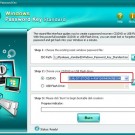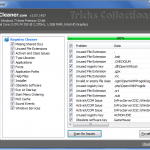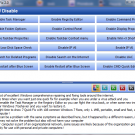Qemu: A lightweight Virtual Machine Manager
Virtual machine applications such as VMware or VitualBox is very popular, but is there a similar application a more “lightweight” and is opensource? One alternative that I recommend is Qemu, originally only runs on UNIX-family operating system platforms (including Linux).
At present, Qemu has been created which version can be run on the Windows operating system platform. In this article I will exemplify a few steps how to install the operating system using Mikrotik (one Linux distro) to networked learning.

Here’s his steps:
- Please download and then install Qemu package manager.
- Run Qemu Manager. We create a new virtual machine for a virtual operating system that we want to install. Click the plus sign button (Create New VM). In the dialog box of the New Virtual Machine Wizard, type a name for the new virtual machine identifier, let other options. Select the type of operating system platforms at the field Operating System. Click the Next button.
- Specify the allocation size of the memory RAM to be used by the new virtual machine in the Memory Size. Specify also the allocation of space on the hard disk size for the new virtual machine in the Disk Image Size. Then click the Next button.
- Click the Finish button. New Virtual machine as a “container” operating system that we will install is already formed.
- Now we set some of settings. On the Virtual Machines, highlight the name of the virtual machine. Go to the Hardware tab. Click on the Network Cards in quick succession.
- If we want the virtual machine also has a connection to the network, on the Network card dialog box select the VLAN Type = TAP Networking. Click Select network adapter in the TAP.
- On the Tap Network Adapter dialog box, click the plus sign button.
- Then in the dialog box Qemu Manager TAP Installer Setup, click the Install button.
- If a warning box appears, click the Continue Anyway button.
- Back in the settings of the virtual machine settings, open the tab Drives. Click on the CD ROM in quick succession.
- If we want to install the operating system from an existing ISO file in harddsik. Click the two dot button. Navigate to the operating system ISO file in the hard disk, and then click Open and OK button.
- If we want to install the operating system from CD/DVD disc, click Use Physical Drive button, and then navigate to the drive letter of the CD/DVD ROM and click the OK button.
- Back in the settings of the virtual machine settings, still on the Drives tab. Click on the Boot Order in quick succession. If we are going to install the new operating system from CD/DVD ROM drive, put the drive on the top, and then click the OK button.
- Once everything is ready, click the Play arrow button (Launch Selected VM) at the top of the screen.
- New operating system start installed into virtual machine that we has prepare.
- After installation of the operating system into a virtual machine is finished, remove the pieces of CD/DVD from the CD/DVD ROM DRIVE and turn off the virtual machine by clicking the Stop Selected VM button. If a warning box appears, click Yes button.
- Restart the virtual machine has finished installed.
0 Responses





